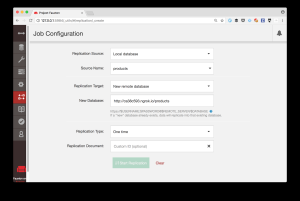There’s a slide deck, some exercises and a sample repo on GitHub … let’s dive in! Continue reading
Tag Archives: ngrok
Using Config Files with Ngrok
You can use a central config file for ngrok, and/or specific config files for each project. I use both, so I’ll show you around my setup. Continue reading
Copying CouchDB Data Between Laptops
Ngrok allows me to make the CouchDB on one machine visible to the world (with all the security caveats that this entails! It’s a random URL, never leave the tunnel open longer than you need it, etc) with a command like this:
ngrok http 5984
This opens a tunnel to my local machine on port 5984 which is CouchDB’s default port. I’m running a local dev instance that doesn’t need a username or password which makes this simpler if not exactly secure. I get a gobbledeegook ngrok URL that will allow anyone, anywhere to talk to my CouchDB.
Then I went ahead and on the other laptop, used the web interface to start replication from the sample products database on the local machine over to the one on the ngrok URL.

As soon as it starts, the first laptop shows that there’s traffic coming over the ngrok link – and a few minutes later I had the database I wanted and can go ahead and work on this feature.
Use Ngrok Dashboard from VM
This is a config setting but it can’t be supplied on the command line, instead create a file called ~/.ngrok2/ngrok.yml and add the following line:
web_addr: 0.0.0.0:4040
This will enable you to then reach the web interface at [VM IP or hostname]:4040.
